Year 1622–25 (1622–25) Type Sculpture Dimensions 243 cm (96 in) Location Galleria Borghese Media Marble Subject Daphne, Apollo | Catalogue 18 Medium Marble Artist Gian Lorenzo Bernini Period Baroque Created 1622–1625 | |
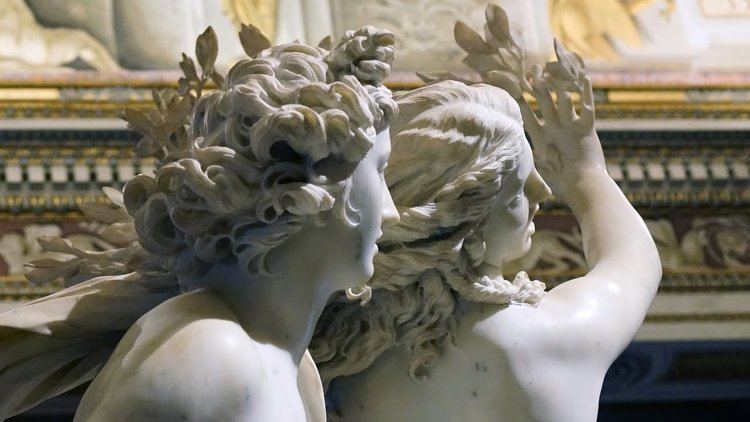 | ||
Similar Gian Lorenzo Bernini artwork, Artwork at Galleria Borghese, Marble | ||
Bernini apollo and daphne
Apollo and Daphne is a life-sized Baroque marble sculpture by Italian artist Gian Lorenzo Bernini, executed between 1622 and 1625. Housed in the Galleria Borghese in Rome, the work depicts the climax of the story of Daphne and Phoebus in Ovid's Metamorphoses.
Contents
- Bernini apollo and daphne
- Gian lorenzo bernini apollo and daphne otello scatolini
- History
- Iconography
- Critical reception
- References
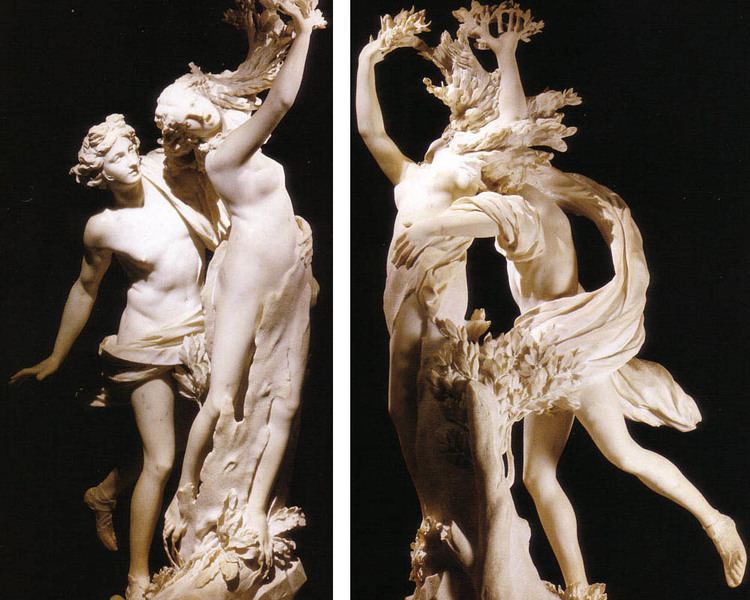
Gian lorenzo bernini apollo and daphne otello scatolini
History

The sculpture was the last of a number of artworks commissioned by Cardinal Scipione Borghese, early on in Bernini's career. Apollo and Daphne was commissioned after Borghese had given an earlier work of his patronage, Bernini's Pluto and Persephone, to Cardinal Ludovico Ludovisi.

Much of the early work was done in 1622–1623, but a pause, quite possibly to work on the sculpture of David, interrupted its completion, and Bernini did not finish the work until 1625. Indeed, the sculpture itself was not moved to the Cardinal's Villa Borghese until September 1625. Bernini did not execute the sculpture by himself; he had significant help from a member of his workshop, Giuliano Finelli, who undertook the sculpture of the details that show Daphne's conversion from human to tree, such as the bark and branches, as well as her windswept hair. Some historians, however, discount the importance of Finelli's contribution.
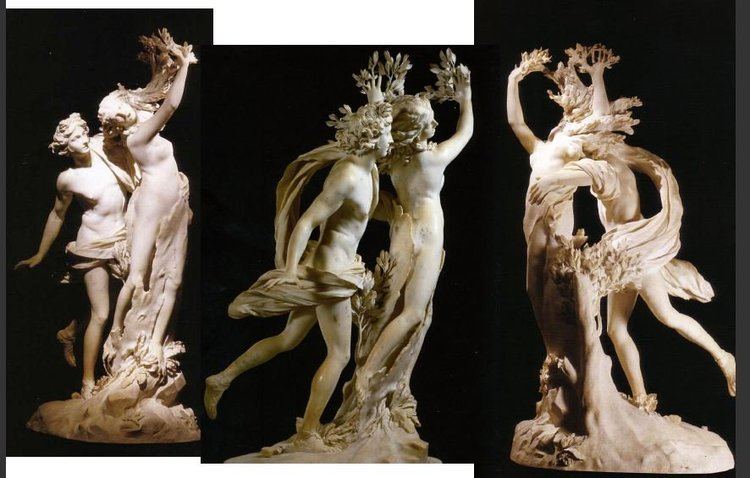
While the sculpture may be appreciated from multiple angles, Bernini planned for it to be viewed side on, allowing the observer to see the reactions of Apollo and Daphne simultaneously, thus understanding the narrative of the story in a single instant, without the need to move position.
Iconography
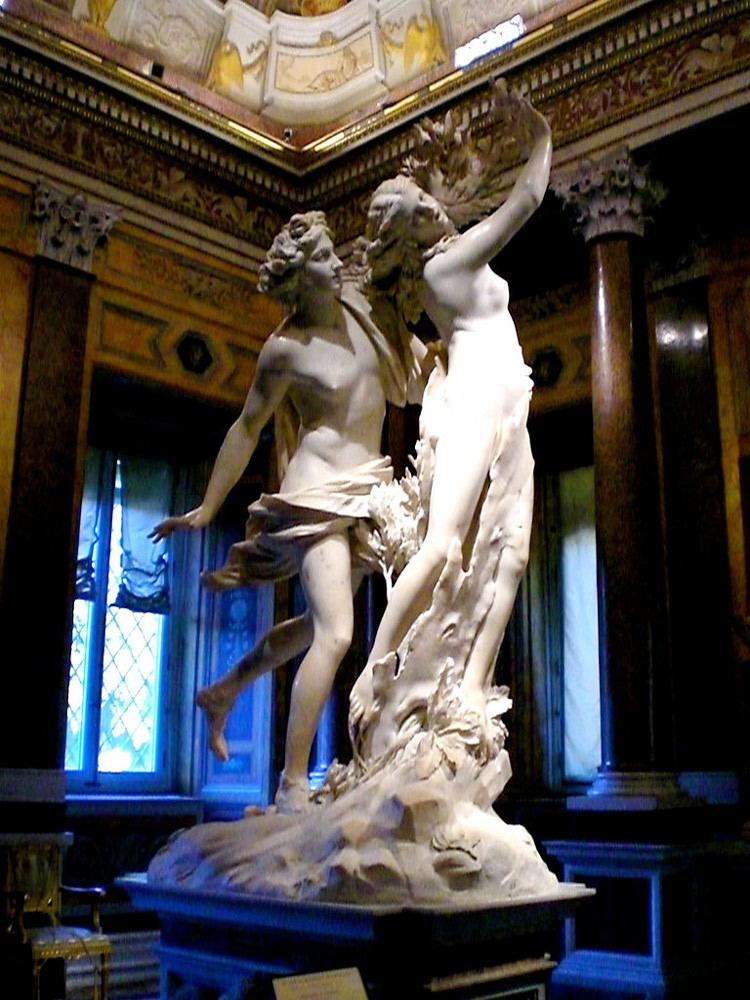
When Phoebus (Apollo), fated by Cupid's love-exciting arrow, sees the maiden daughter of Peneus, a river god, he is filled with wonder at her beauty and consumed by desire. But Daphne has been fated by Cupid's love-repelling arrow and denies the love of men. As the Nymph flees he relentlessly chases her—boasting, pleading, and promising everything. When her strength is finally spent she prays to her father Peneus:
Destroy the beauty that has injured me, or change the body that destroys my life.

Before her prayer was ended, torpor seized on all her body, and a thin bark closed around her gentle bosom, and her hair became as moving leaves; her arms were changed to waving branches, and her active feet as clinging roots were fastened to the ground—her face was hidden with encircling leaves.
Yet Phoebus lost none of his passion for Daphne:
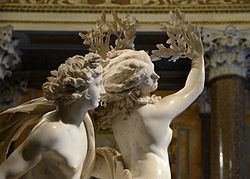
Even like this Phoebus loved her and, placing his hand against the trunk, he felt her heart still quivering under the new bark. He clasped the branches as if they were parts of human arms, and kissed the wood. But even the wood shrank from his kisses, and the god said:
Since you cannot be my bride, you must be my tree! Laurel, with you my hair will be wreathed, with you my lyre, with you my quiver. You will go with the Roman generals when joyful voices acclaim their triumph, and the Capitol witnesses their long processions. You will stand outside Augustus's doorposts, a faithful guardian, and keep watch over the crown of oak between them. And just as my head with its uncropped hair is always young, so you also will wear the beauty of undying leaves.
Paean had done: the laurel bowed her newly made branches, and seemed to shake her leafy crown, like a head giving consent.
Critical reception
Despite Bernini's reputation falling after his death, Apollo and Daphne continued to be praised. A French traveller in 1839 commented that the group is "astonishing both for mechanism of art and elaborateness, is full of charm in the ensemble and the details." One 19th century literary journal considered it the only Bernini work worthy of lasting praise. Others were less positive. An English travel writer in 1829 noted Bernini's technical skill but added that the sculpture "bears all the want of judgment, taste, and knowledge of that age", going on to criticise the appearance of Apollo for being too like a shepherd and not enough like a god.
More recent historians have been much more positive. Robert Torsten Petersson calls it "an extraordinary masterpiece ... suffused with an energy that works out of the tips of the laurel leaves and Apollo's hand and drapery."
